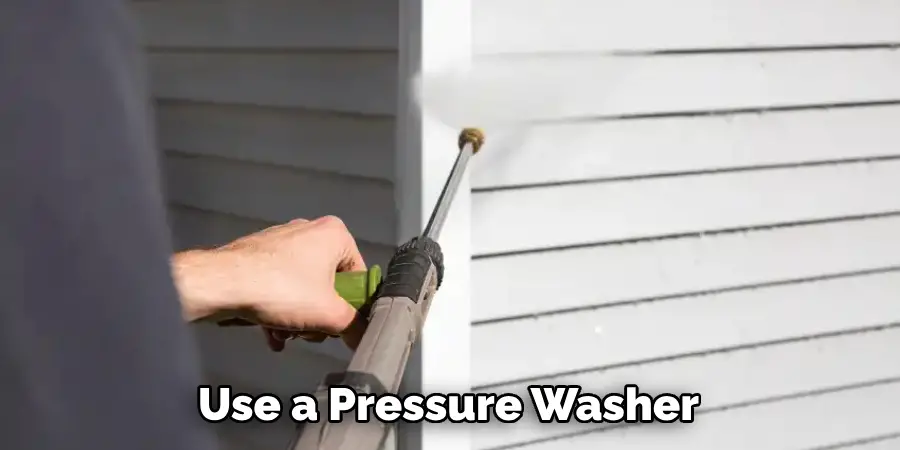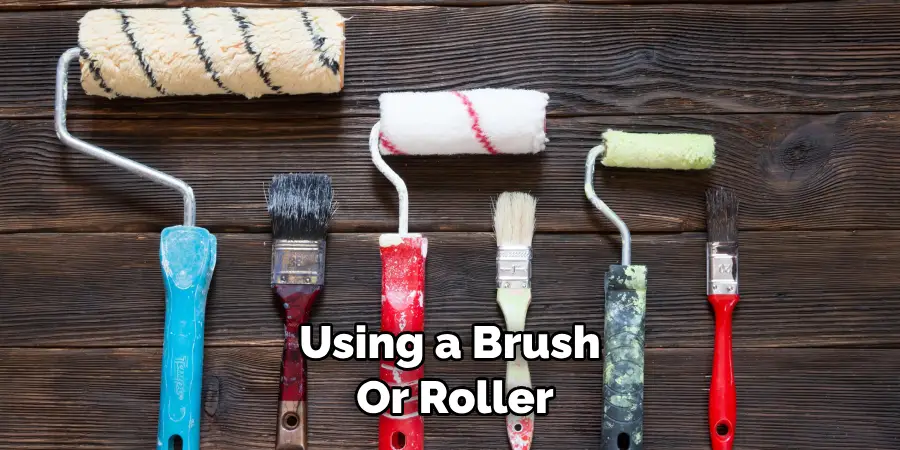Do you have wood siding on the exterior of your home that is starting to look faded, or discolored, or do you simply want a different color? Restaining your wood siding can give it an instant upgrade and bring back its natural beauty.

In this blog post, we will show you step-by-step how to restain wood siding quickly and easily with protective coatings to keep it looking great for years. So if you’re ready to revitalize your home’s exterior with new stained panels, grab some equipment, read up on our tips below, and get started!
Tools and Materials You Will Need to Restain Wood Siding
- Respirator or dust mask
- Safety glasses
- Drop cloths or plastic sheeting
- Brushes, rollers, and/or sprayers (depending on the type of stain you are using)
- Exterior wood stain
- Staining rag or pad
- Putty knife or scraper
- Sandpaper
Step-by-step Guidelines on How to Restain Wood Siding
Step 1: Clean the Wood Siding
Before you can begin to restain your wood siding, it is important to give the panels a thorough cleaning. Use a pressure washer or a garden hose and an appropriate cleaner such as trisodium phosphate (TSP) to remove dirt, mildew, and other build-up from the surface of the wood. Make sure to wear the appropriate safety equipment while cleaning.
Step 2: Prepare the Wood Siding for Staining

Once the wood siding is clean and dry, use sandpaper or a wire brush to remove any loose paint or stains from the surface. This will help create a smooth surface that will accept the new stain properly. Preparing the wood siding before applying the stain is important, as it will help the stain last longer and look better.
Step 3: Apply Exterior Wood Stain
Once the surface has been properly prepared, you can begin to apply your exterior wood stain. Before beginning, make sure that you wear protective eyewear and a respirator or dust mask to protect yourself from the fumes. Depending on the wood and stain you are using, choose a brush, roller, or sprayer to apply the stain. Start at the top of your panels and work your way down in order to avoid drips and runs.
Step 4: Allow Stain to Dry
After applying the wood stain, allow it to dry thoroughly before applying a second coat. It is important to follow the manufacturer’s instructions for drying times and recoating instructions. You want to make sure that the wood stain has enough time to dry properly before adding additional coats or topcoats of protection.
Step 5: Add Finishing Touches
Once the stain has dried, you can add any finishing touches if desired. These can include a sealer or topcoat to protect your wood siding and keep it looking beautiful for years. Make sure to use the same type of stain and sealer that you used to stain the wood siding in order to ensure compatibility.
Following these steps will help you restain wood siding quickly and easily. With a little bit of preparation, you can have beautiful stained panels that add charm and character to your home’s exterior. Good luck!
Additional Tips and Tricks to Restain Wood Siding

1. When staining the wood, apply the stain from the top down. This will help make sure that all areas of the siding are evenly stained, and will prevent any streaks or blotches in your final product.
2. Make sure to use a brush with soft bristles when applying the stain. This will ensure a more even coat and will give you better control over your staining job.
3. Before applying the final coat of stain, be sure to let the wood siding dry completely. This will help prevent any streaks or blotches in your final product.
4. If you have any difficult spots to reach when staining, use an old sock or cloth to apply the stain. This will allow you to get into the nooks and crannies of the wood siding, and get an even coat.
5. When you’re finished staining your wood siding, make sure to let it dry completely before applying any sealants or protective finishes. This will help keep your siding looking great for years to come.
6. Be sure to use a high-quality stain and finish for your wood siding. This will help ensure that it lasts longer and looks better. Additionally, make sure to follow the manufacturer’s instructions when applying the stain and finishes.
7. It’s important to always wear protective gear when staining wood siding, such as gloves, safety glasses, and a face mask. This will protect you from any harmful chemicals or fumes that could be emitted from the stain.
8. Finally, it’s important to clean up any spills immediately, as these can cause staining and discoloration on your wood siding. Make sure to use a mild cleaner and warm water to get rid of any stains or discolorations before they set in permanently. This will help keep your wood siding looking great for years to come.
9. Once you’re finished staining your wood siding, make sure to properly maintain it with regular cleanings and inspections. This will help keep the stain looking good over time, and will also prevent any damage or wear and tear from occurring. Additionally, be sure to check the sealants and protective finishes periodically to ensure that they are still in good condition.

Following these tips and tricks will help ensure that your wood siding looks great for years to come. With a bit of maintenance and attention, you can enjoy the beauty and value of well-maintained wood siding in your home. Good luck!
Precautions Need to Follow for Restaining Wood Siding
- Make sure the wood siding is in good condition before applying a new stain. If possible, inspect the wood from both sides and check for any warping or decay.
- Prepare the surface by sanding or power washing to remove any dirt, dust, or old finishes. Clean up any residue with a damp cloth and let the wood dry thoroughly before proceeding.
- Select a quality stain that matches your color preference and temperature requirements. Some stains can be sensitive to extreme temperatures so read labels carefully before purchasing.
- Apply the stain according to the manufacturer’s instructions, using a brush or roller. Start at one corner and work your way across in even strokes.
- Allow the first coat of stain to dry completely before applying additional coats if necessary.
- After staining is finished, make sure all equipment and supplies are properly cleaned and stored in a safe place for future use.
- Provide regular maintenance and upkeep to ensure the longevity of your wood siding. Inspect every couple of months for any signs of damage or decay that may require further attention and repair.
- Consider hiring a professional if you’re not comfortable with the project or don’t have the necessary experience and skill set to complete it safely. This will help you avoid costly mistakes and damage to your property.
Following these precautions before and during any staining project will help you achieve the desired results with minimal effort and hassle. It’s important to take your time, do it right the first time, and enjoy the finished product for years to come.
Frequently Asked Questions
How Often Should I Restain Wood Siding?
Generally, you should look to restain your wood siding every three to five years depending on the climate and weather conditions in your area. If you live in an area with frequent storms or harsh winters, it may be necessary to restain more frequently. If there’s any sign of wood fading, peeling, cracking, or warping, you should restain your siding right away.

What Kind Of Wood Stain Should I Use?
The kind of wood stain you choose will depend on the type of wood used in your siding and what look you’re trying to achieve. Water-based stains are easy to clean up and offer a variety of colors, while oil-based stains are longer lasting and provide better protection against UV rays and moisture. Make sure to check the label carefully when choosing a stain to ensure you’re using the right kind for your siding.
Is It Necessary To Use A Primer?
In most cases, a primer is not necessary when restaining wood siding. If the original stain used on the siding has been removed or faded significantly, however, you should use a primer to ensure an even finish and better durability. Before applying any new coat of stain, make sure to check the label instructions to ensure you’re using the right kind of primer for your siding.
What Is The Best Way To Clean Wood Siding Before Restaining?
Before restaining wood siding, it’s important to give it a thorough cleaning with a mild detergent and water. This will help remove any mold or dirt that may have accumulated on the siding and allow for a better application of the new stain. Allow the siding to dry before applying any new stain. You may also want to consider power washing your wood siding to get a deeper clean if necessary.
Conclusion
With the above outlined you can easily understand how to restain wood siding correctly. Be sure to use the right kind of stain and primer, clean the siding properly before applying any new coats, and check the label instructions for more detailed information. Doing so will ensure your wood siding is looking its best for years to come!
This guide will help you have an easier time maintaining beautiful wood siding that lasts for many years with minimal maintenance. Make sure to check the weather and climate of your area so you know how frequently you should restain your wood siding for optimal results! Happy staining!

